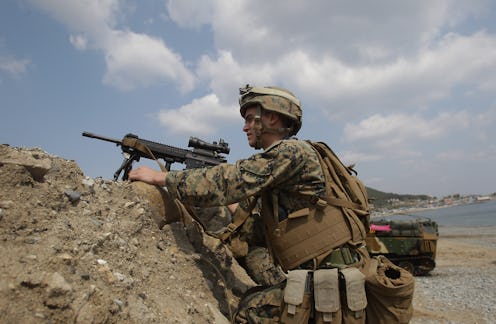News
53 Percent of Military Sexual Assault Victims Are Men
A Sunday New York Times piece about male sexual assault victims in the military included a surprising statistic: the majority of military sexual assault victims—53 percent—are men.
“It’s easy for some people to single out women and say: ‘There’s a small percentage of the force having this problem,’ ” First Lt. Adam Cohen, who said he was raped by a superior officer, explained. “No one wants to admit this problem affects everyone. Both genders, of all ranks. It’s a cultural problem.”
Rick Lawson says he was repeatedly sexually bullied while in the Army National Guard. In one incident, a sergeant reportedly rubbed his groin into Mr. Lawson's buttocks, and in another, he says he was handcuffed and put into a headlock while another member pretended to sodomize him.
Some have tried to blame the military sexual assault problem on the entrance of women into the military, or the repeal of 'Don't Ask, Don't Tell.'
"That is absurd," Lawson says. "The people who perpetrated these crimes on me identify as heterosexual males."
Of course, the stigma of being sexually assaulted—especially as a man— leads to a significant number of these cases going unreported. But the recent congressional efforts to curb military sexual assault, and the release of a new documentary about male sexual assault victims in the military called Justice Denied have begun to create increased awareness about male victims.
This awareness has positive implications for military members of both genders. “I think telling the story about male victims is the key to changing the culture of the military,” Anuradha K. Bhagwati, executive director of the Service Women’s Action Network, told the Times. “I think it places the onus on the institution when people realize it’s also men who are victims.”
